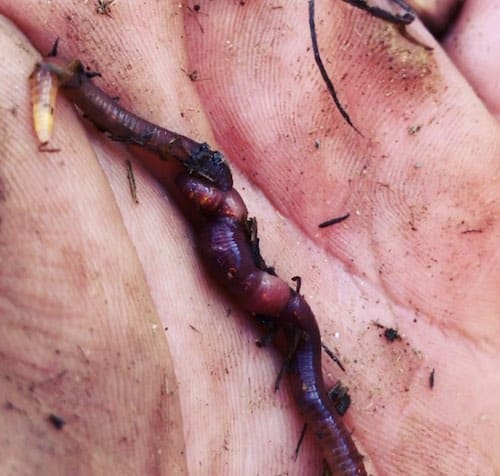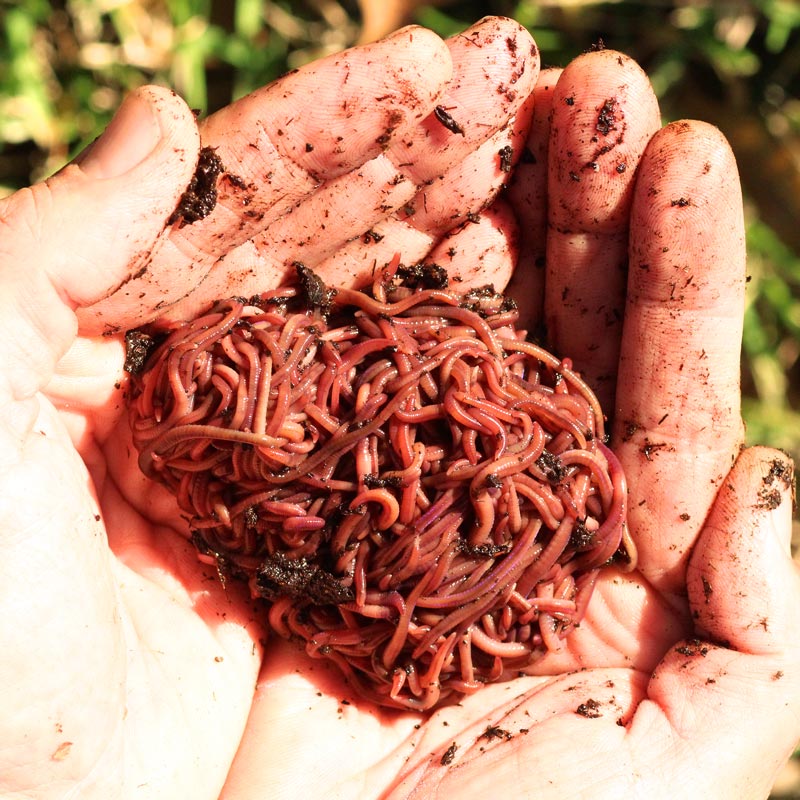Optimizing the Advantages of Red Wiggler Worms: A Comprehensive Manual for Home Gardeners and Urban Farmers
In the realm of lasting horticulture techniques, red wiggler worms stand as unrecognized heroes, quietly changing natural waste into nutrient-rich castings that can work marvels for dirt wellness. By discovering the intricacies of how to successfully care for and maximize the benefits of red wiggler worms, individuals can open a wide range of possibilities for boosting the sustainability and performance of their gardening undertakings.
Recognizing Red Wiggler Worms
Red Wiggler worms, renowned for their reliable composting capacities, are a species of earthworms extensively used in vermiculture practices. These worms, scientifically known as Eisenia fetida, grow in rotting natural material, making them ideal candidates for composting.
One trick characteristic of Red Wiggler worms is their reproductive rate. These hermaphroditic animals possess both women and male reproductive organs, permitting them to replicate quickly under desirable problems. A fully grown Red Wiggler can produce numerous offspring in a brief period, ensuring a steady population within a composting system.

Setting Up a Worm Container
When developing a worm bin for vermiculture purposes, appropriate preparation and interest to detail are essential for creating a favorable atmosphere for Red Wiggler worms. Begin by choosing an appropriate container for your worm bin. This can be a plastic or wood container with a lid to keep moisture levels and secure the worms from light. Make certain that the container has drain holes at the bottom to stop waterlogging.

Place the worm container in an amazing, dark location away from straight sunshine and extreme temperatures. By following these steps, you can establish up a thriving worm container that will successfully refine natural waste right into nutrient-rich vermicompost for your garden.
Feeding and Preserving Worms
Ensuring a nourishing and well balanced diet plan is critical for the wellness and performance of Red Wiggler worms in a vermiculture system. Red Wigglers are starved eaters, qualified of eating their own body weight in organic issue daily. To maintain a flourishing worm population, it is vital to supply them with a selection of food scraps such as vegetables and fruit peels, coffee grounds, tea bags, and smashed eggshells. It is important to stay clear of feeding them citrus fruits, onions, garlic, dairy products, meat, and oily foods as these can be damaging to the worms or create undesirable smells in the container.
Appropriate wetness levels are also essential for the wellness of Red Wiggler worms. The bed linens must feel like a moist sponge, supplying sufficient dampness for the worms to breathe with their skin. Consistently inspect the dampness degrees and adjust by including water or completely dry bed linens product as needed. In addition, keeping correct temperature conditions between 55-77 ° F(13-25 ° C )will certainly make sure ideal worm task and reproduction. By carefully monitoring their diet plan, moisture, and environmental problems, home garden enthusiasts and city farmers can sustain a healthy and effective Red Wiggler worm populace for composting purposes.
Harvesting Worm Castings
To efficiently draw out nutrient-rich worm castings from the vermicompost, a methodical harvesting process is essential for making the most of the composting advantages. The very first step in collecting worm spreadings is to urge the worms to move to one side of the container.
After the castings have been gathered, it is necessary to divide any type of continuing to be worms from the castings to prevent damaging them during storage space or application. One effective technique is to produce cone-shaped stacks of spreadings under brilliant light. Worms will naturally relocate far from the light, enabling for very easy separation and removal.
Lastly, the collected worm spreadings need to be saved in an awesome, dark, and dry location to keep their top quality and efficiency as a nutrient-rich dirt change. By following these actions, home gardeners and metropolitan farmers can maximize the advantages of red wiggler worms in their vermicomposting systems.
Utilizing Worm Castings in Horticulture
The consolidation of nutrient-rich worm spreadings right into garden soil can dramatically improve plant growth and total soil wellness. Worm castings, additionally referred to as vermicast, are her response an all-natural plant food produced by red wiggler worms as they damage down raw material. These castings are abundant in necessary nutrients like nitrogen, phosphorus, potassium, and advantageous microbes that advertise plant development and boost dirt framework.
When utilizing worm castings in horticulture, it is necessary to mix them thoroughly into the dirt or use them as a top dressing around plants. The slow-release nature of worm castings ensures a steady supply of nutrients to plants in time, minimizing the danger of nutrient leaching and advertising long-term soil fertility. In addition, worm spreadings assist enhance soil aeration, water retention, and microbial activity, producing a healthy and balanced environment for plant origins to prosper.

Conclusion
In conclusion, the use of red wiggler worms in home horticulture and metropolitan farming can dramatically profit soil wellness and plant growth. By comprehending exactly how to set up and maintain a worm container, feed the worms effectively, and gather their nutrient-rich spreadings, gardeners can optimize the advantages of these earthworms.
In the world of lasting gardening techniques, red wiggler worms stand as unrecognized heroes, quietly transforming natural waste right into nutrient-rich spreadings that can why not try these out work marvels for dirt health.When developing a worm container for vermiculture objectives, appropriate prep work and interest to detail are crucial for creating a favorable environment for Red Wiggler worms. The initial step in collecting worm spreadings is to encourage the worms to move to one side of the bin. Worm spreadings, also known as vermicast, are an all-natural fertilizer produced by red wiggler worms as they damage down organic matter. By recognizing how to establish click here to find out more up and maintain a worm container, feed the worms appropriately, and harvest their nutrient-rich castings, garden enthusiasts can maximize the benefits of these earthworms.